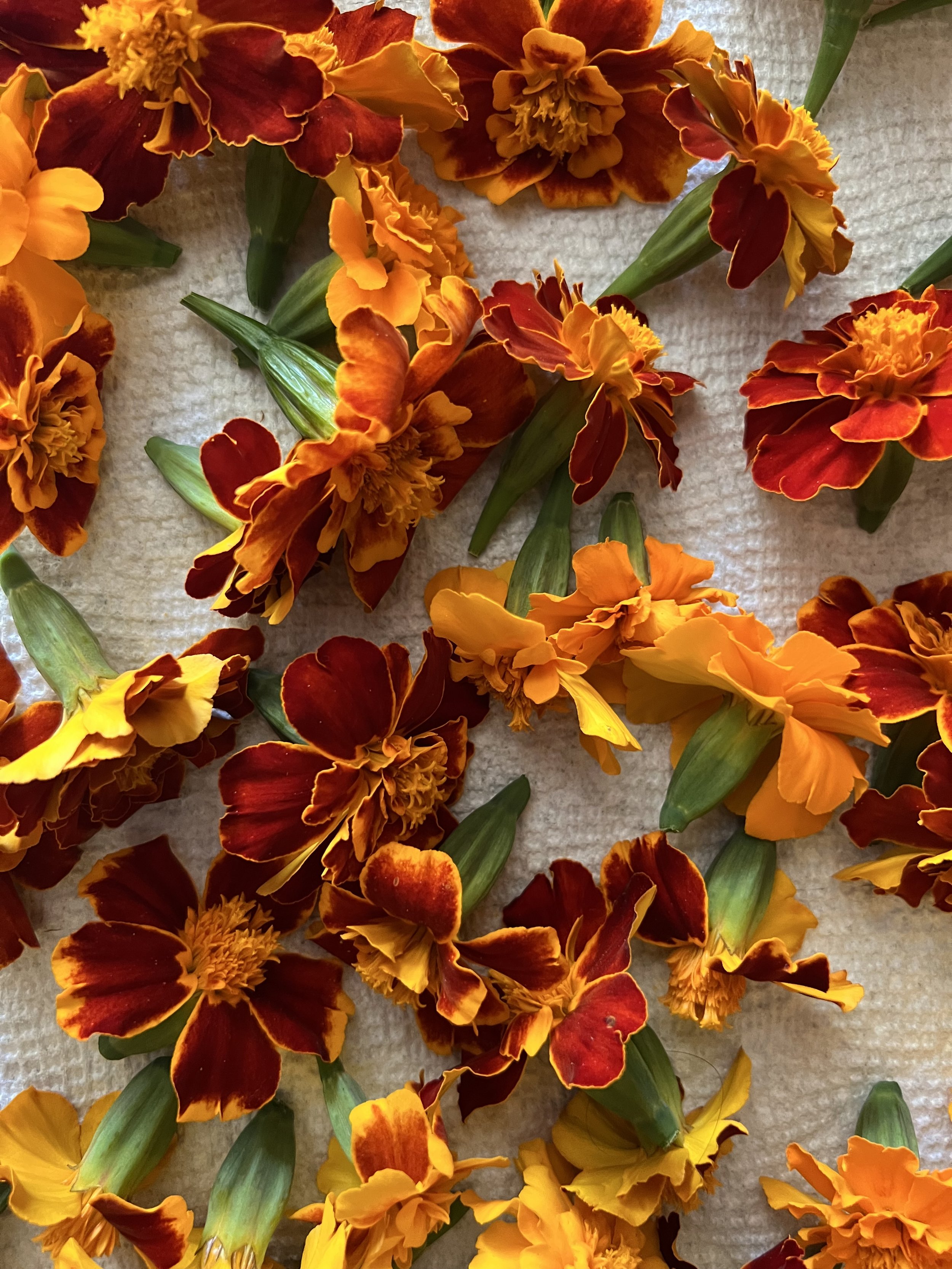Making Marigold Dye
It begins with a new favorite, marigolds. I planted them around the roses in an attempt to protect the roses from pests, but fell in love with their variations and decadent color. They grew in such abundance I felt compelled to use them, to capture their bloom.
There are many ways to dye with marigolds; this is how we do it.
DYE PREP:
Step 1:
Harvest the blooms! Using any kind of snips or scissors, cut the bloom heads off the plant.
Leave at least 1/4 of the blooms, especially if you’re harvesting at the end of the season to self-seed for next year.
Step 2: Only do this step if there is a gap of 1 day or more between Step 1 and Step 3.
Lay the blooms out in a single layer on a dry towel, or rack. They can rest here as long as you like. Fully dried marigolds can be stored in jars or other containers.
FABRIC PREP:
Step 1:
Choose the fabric, this method works best on natural fibers, and is most vibrant in silk. Rayon will dye in muted, soft tones.
Step 2:
Scour the fabric. We found washing the fabric in the laundry with scouring detergent was the just as effective as hand washing, but speedier :)
Step 3:
Weigh the dried scoured fabric and calculate how much mordant to use. We use aluminum sulfate for mordant.
for silk, we use about 20% of the weight of the fabric
for cotton we use 15% of the weight of the fabric
Mordant is the special sauce that enables the fabric to retain the dye color, but it can also weaken the fibers. There is a balance between vivid color payout and fiber strength/ integrity.
Be clear, be confident and don’t overthink it. The beauty of your story is that it’s going to continue to evolve and your site can evolve with it. Your goal should be to make it feel right for right now. Later will take care of itself. It always does.




